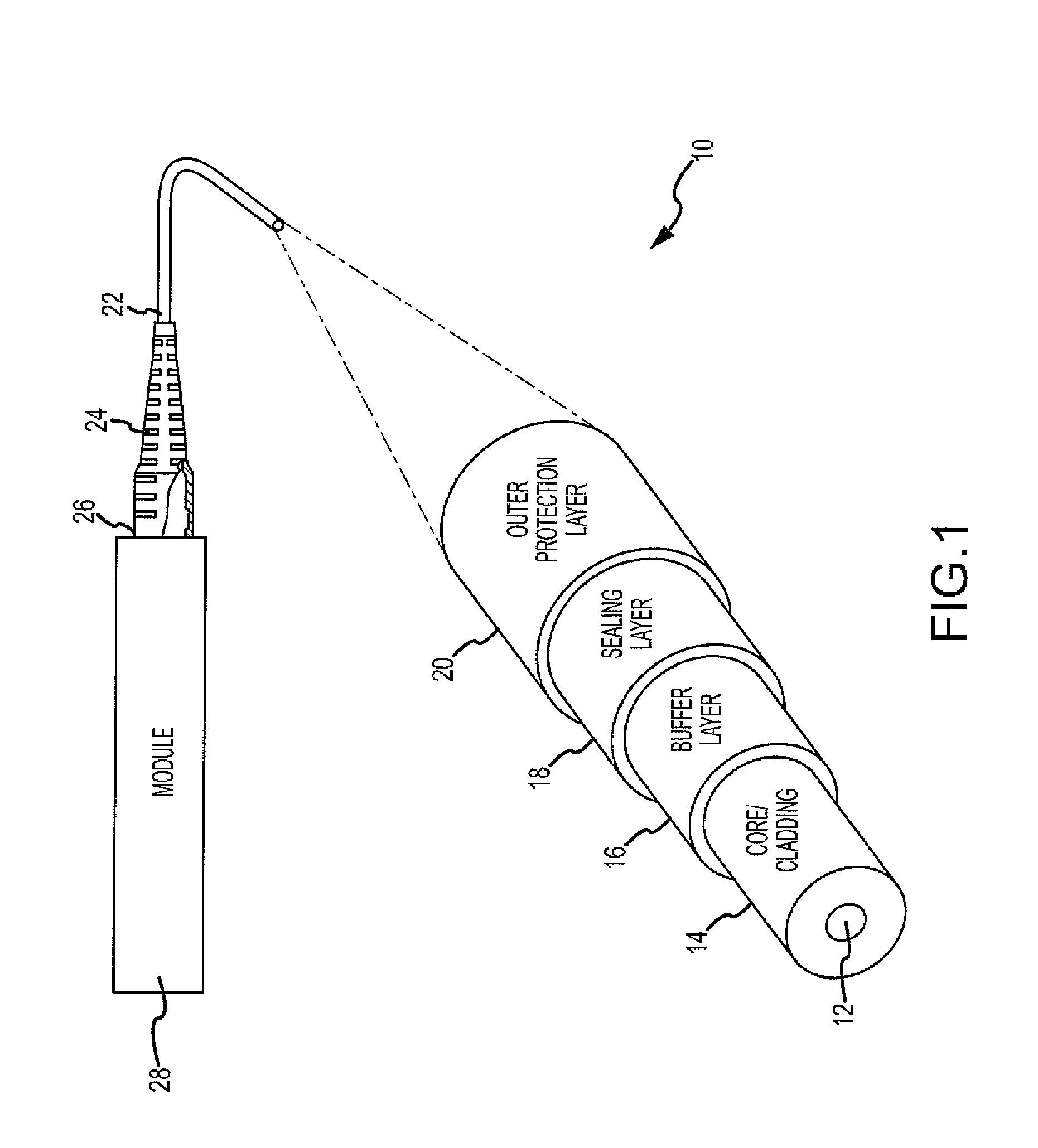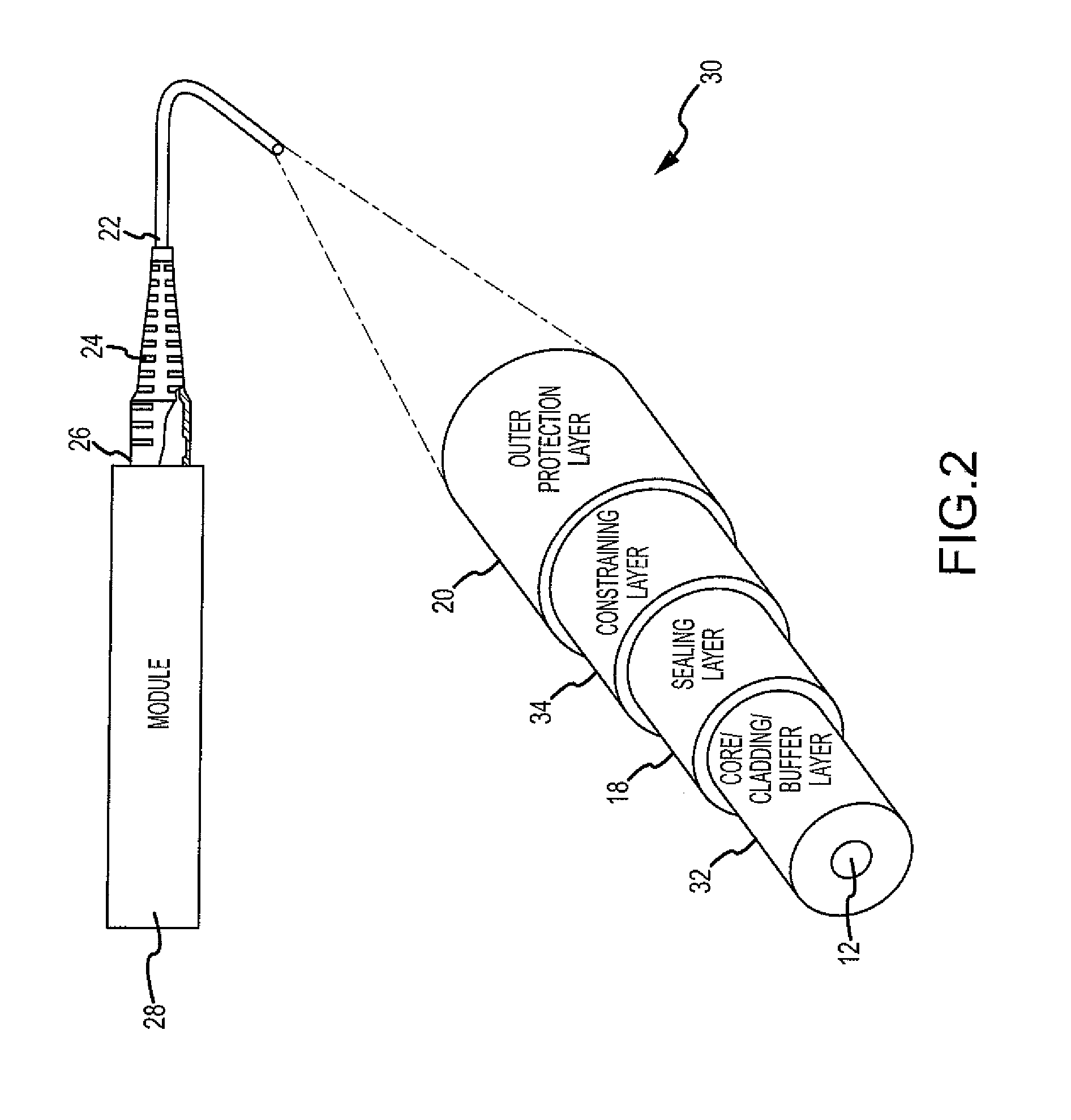Self healing optical fiber cable assembly and method of making the same
a self-healing, optical fiber cable technology, applied in the field can solve the problems of optical fiber reliability, conventional fiber loss increase, and inability to contribute to the optical wave guide properties of optical fibers, so as to prolong the life of optical fiber cables, prevent complete failures, and increase reliability
- Summary
- Abstract
- Description
- Claims
- Application Information
AI Technical Summary
Benefits of technology
Problems solved by technology
Method used
Image
Examples
Embodiment Construction
[0033]Disclosed embodiments will now be described more fully hereinafter with reference to the accompanying drawings, in which some, but not all disclosed embodiments are shown. Indeed, several different embodiments may be provided and should not be construed as limited to the embodiments set forth herein. Rather, these embodiments are provided so that this disclosure will be thorough and complete and will fully convey the scope of the disclosure to those skilled in the art.
[0034]The disclosure provides for a self healing optical fiber cable assembly and method of making the same. The self healing optical fiber cable assembly and method of the disclosed embodiments may be used in connection with various applications including, but not limited to, space worthy applications, such as space satellites, spacecraft and free space laser communication systems, as well as with sensors, terrestrial applications, aircraft, vehicles, underwater communication systems, long distance communication...
PUM
| Property | Measurement | Unit |
|---|---|---|
| outer diameter | aaaaa | aaaaa |
| outer diameter | aaaaa | aaaaa |
| inner diameter | aaaaa | aaaaa |
Abstract
Description
Claims
Application Information
 Login to View More
Login to View More - R&D
- Intellectual Property
- Life Sciences
- Materials
- Tech Scout
- Unparalleled Data Quality
- Higher Quality Content
- 60% Fewer Hallucinations
Browse by: Latest US Patents, China's latest patents, Technical Efficacy Thesaurus, Application Domain, Technology Topic, Popular Technical Reports.
© 2025 PatSnap. All rights reserved.Legal|Privacy policy|Modern Slavery Act Transparency Statement|Sitemap|About US| Contact US: help@patsnap.com



